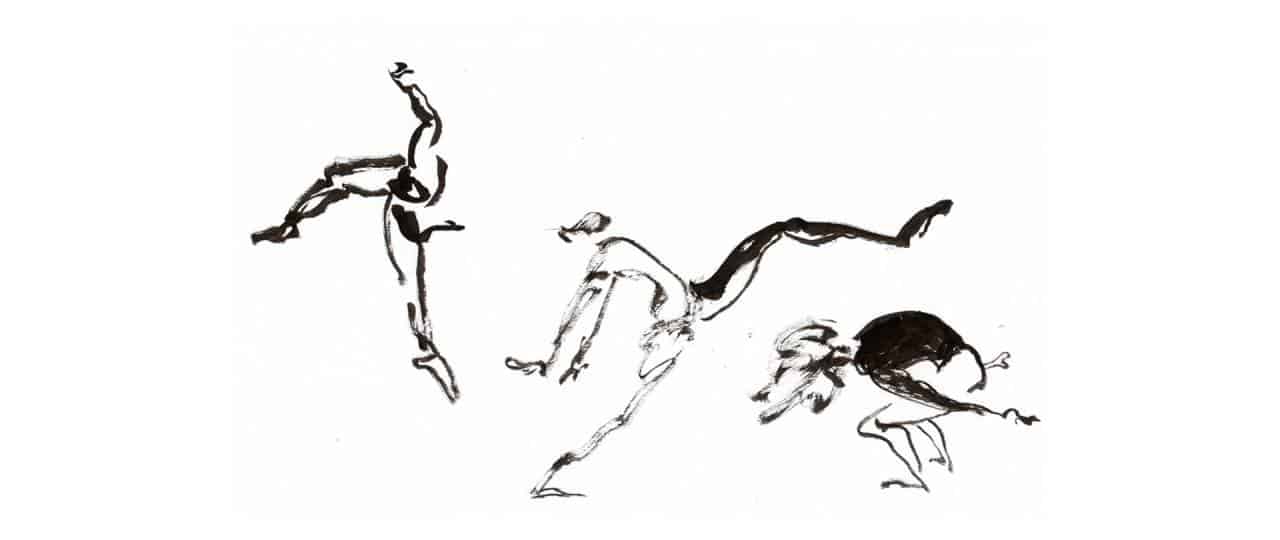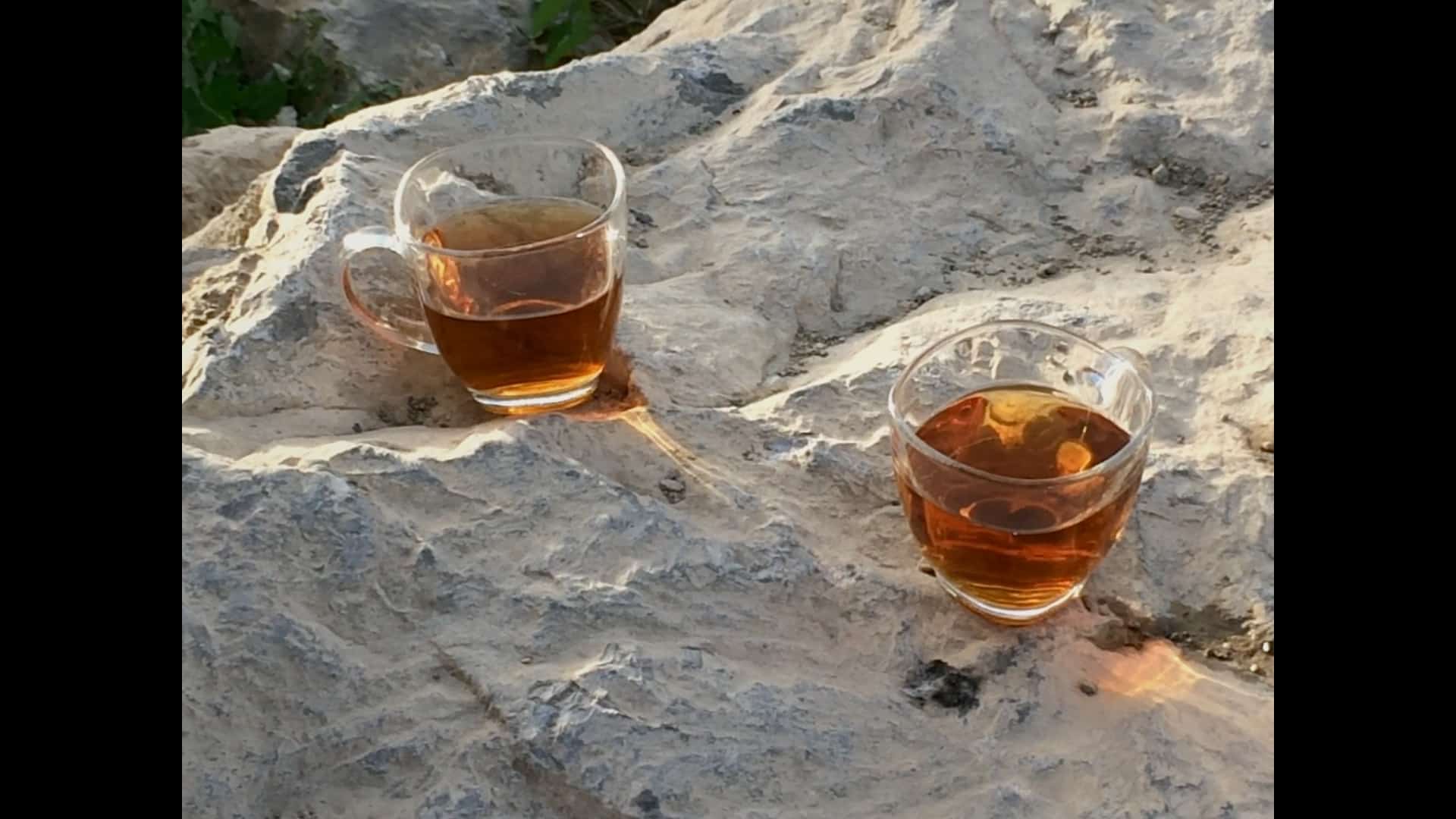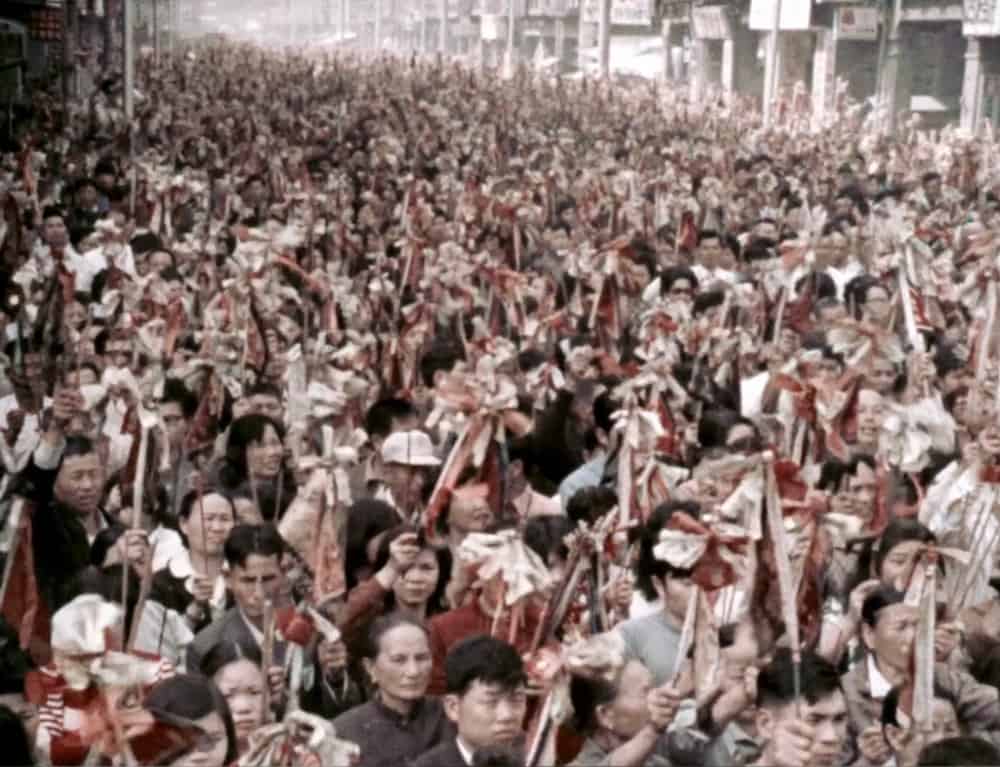“Anma” is a classic piece of Butoh dancing, by creator and legendary figure of the particular style, Tatsumi Hijikata, who performs along with a number of other dancers, including co-creator Kazuo Ohno, Yoshito Ohno and Akira Kasai, among others, under the experimental/noise music of Tomomi Adachi. The particularly film by Takahiko Iimura is an effort to capture the performance of “Anma” but at the same time, it is realized as cine-dance, essentially filming choreography and choreographing film at the same time, through a meta approach, that also has the director performing with his camera among the dancers on the stage and includes footage from the audience watching the whole endeavor.
“Anma” is screening at Japanese Avant-Garde and Experimental Film Festival

Multiple texts on black screen split the movie into various segments, while explaining where the dancers got their inspiration from, each time, in regard with the concept of anma, which they tried to interpret through their movements. “Anma is the art of releasing of the mind and body. To anma is to rub the skin and muscles using fingers arms and legs. To anma is to smooth the blood circulation while enhancing the metabolism of the body. Anma is usually practiced by the blind, but may also be performed by one with sight, and occasionally by one with sight who pretends to be blind”
In that fashion, the film begins with people rubbing each other's bodies, before the camera turns to the audience coming into the theatre to watch the performance. A group of half men in their underwear are running with desperation up and down the tatamis placed on the stage, under the sound of otherworldly music. Next, they seem to be throwing invisible objects, with the whole part resembling intently some kind of sport exhibition, probably the ancient Olympic games. Occasionally, we can hear them yelling or producing inarticulate screams. The camera also focuses on their feet, which move with small steps on the tatami. Eventually, a number of dressed individuals also enter the scene, along with some women, who do not become the epicenter however. A man on bicycle, people wrestling, chasing a chicken are among the images included here, while the most impressive one comes in the form of a man carrying two other men stretched horizontally on his shoulders, while he is rotating in the scene. A shamisen player also appears, although the sound of her instrument is never actually heard on the movie.
Apart from the meta element of filming a film, the experimental documentary also emits a sense of ritualism and mystery, which seems to permeate the whole “narrative”. The fact that the camera only focuses on a small part of the stage or the theatre, adds to this sentiment, as what is happening is never presented in its whole. All the while, Iimura's effort seems to go against anything that is perceived as standard in (documentary) filmmaking, much like “Anma” seems to do the same with the notions about dancing and performance.
The result is not exactly easy to watch, but the images and the movements are definitely powerful, while thoughts about what the audience thought and the way they experienced the whole endeavor are bound to appear in the mind of the viewer. At the same time, I found myself wishing to be there in the theatre watching the whole thing, not because I enjoyed it in particularly, but because it seems like a truly unique experience. In that regards, it is easy to say that the 20-minute “Anma” definitely fulfills its goal.
















